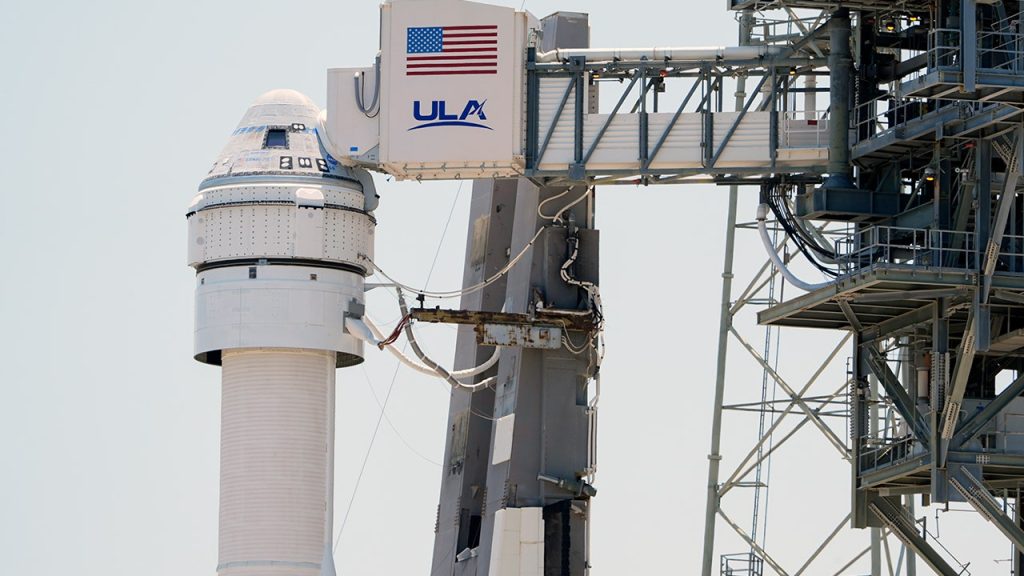Boeing is now aiming for its first astronaut launch at the beginning of June, despite facing problems with the Starliner space capsule. A propulsion system leak was discovered following the first launch attempt on May 6, which was scuttled due to an unrelated rocket problem that has since been fixed. Engineers suspect a defective rubber seal as the cause of the leak, but believe it can be managed in flight. All other seals on the capsule have been checked and are functioning properly, leading NASA to target June 1 for the launch. This will be the third test flight for Starliner, with previous demos in 2019 and 2022 having no crew aboard.
If not for the bad valve on the Atlas V rocket that halted the first countdown, Starliner would have launched earlier with the leak detected in orbit. Flight controllers would have been able to manage the leak, ensuring the safety of the astronauts. Helium is used to pressurize the propulsion system’s fuel lines, which maneuver the capsule during flight. Boeing’s program manager Mark Nappi stated that engineers have located the leak and will use this information to improve the system in the future. It was also discovered that there is a design vulnerability in the propulsion system in the unlikely event of a string of failures, but the team has developed workaround methods to safely bring the capsule out of orbit at the end of the flight if needed.
Boeing’s Starliner capsule has faced delays in transporting astronauts to the International Space Station, with SpaceX currently providing crew launches since 2020. NASA aims to have both Boeing and SpaceX as taxi services to the ISS, ensuring that they can support each other in case of any issues. These recent discoveries and improvements to the Starliner’s propulsion system are part of the ongoing learning process during test flights. Despite the setbacks and challenges, NASA Associate Administrator Jim Free emphasized that safety is the top priority, and they will not launch until they are confident in the safety of the mission.
The identification of the Starliner leak has led to further improvements in the propulsion system to ensure the safety of future flights. Boeing’s dedication to addressing issues and making enhancements shows their commitment to providing secure transportation for astronauts to the ISS. The ongoing testing process for the Starliner capsule is essential in refining the spacecraft and preparing for future crewed missions. With SpaceX already conducting crew launches, Boeing is focused on meeting NASA’s requirements and ensuring that both companies can provide reliable transportation services to the ISS.
The small helium leak discovered in the Starliner capsule has prompted extensive reviews and investigations to ensure that the spacecraft can safely transport astronauts to the International Space Station. Engineers have identified the cause of the leak and are working on improving the propulsion system to prevent similar issues in the future. Despite the delays and challenges, Boeing remains dedicated to meeting NASA’s requirements for crew transportation services and providing a safe and reliable means of traveling to the ISS. The ongoing efforts to address and resolve issues with the Starliner capsule demonstrate Boeing’s commitment to ensuring the safety of astronauts during future missions.
The Starliner capsule’s upcoming test flight on June 1 will be a crucial milestone in Boeing’s efforts to provide crew transportation services to the ISS. The propulsion system enhancements and improvements made as a result of identifying the helium leak and design vulnerabilities show Boeing’s dedication to ensuring the safety and reliability of the spacecraft. With SpaceX already conducting crewed missions to the ISS, Boeing is working diligently to catch up and meet NASA’s requirements for crew transportation services. The ongoing testing and development of the Starliner capsule demonstrate Boeing’s commitment to providing a secure and efficient means of transporting astronauts to the International Space Station.


